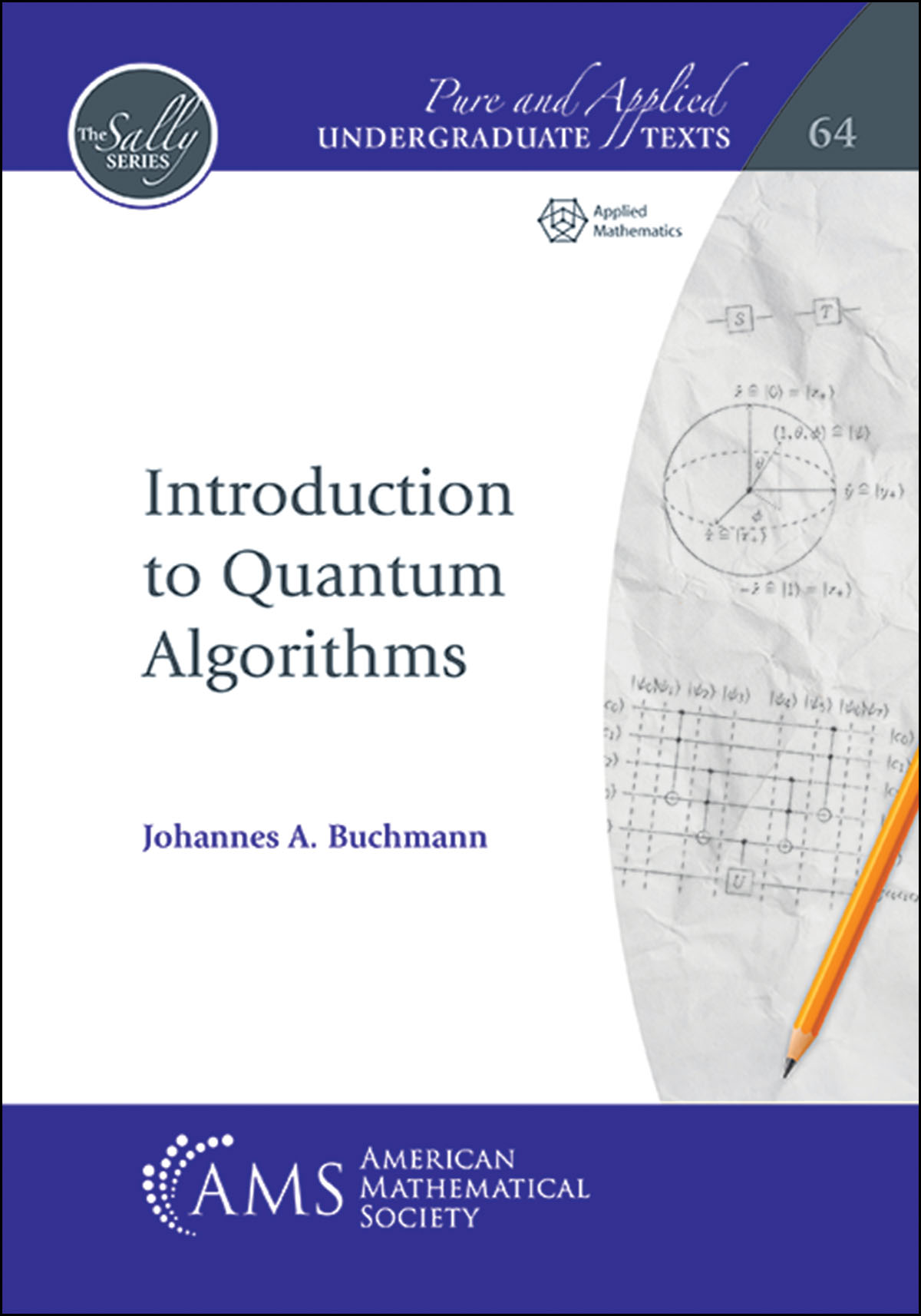
- Author: Johannes A. Buchmann
- Series: Pure and Applied Undergraduate Texts
- Publisher: American Mathematical Society
- Publication Date: 03/18/2024
- Number of Pages: 371
- Format: Paperback
- Price: $89.00
- ISBN: 978-1-4704-7398-3
- Category: textbook
[Reviewed by Bill Satzer, on 11/12/2024]
This is an introduction to quantum computation that focuses specifically on quantum algorithms that manipulate qubits. The replacement of the bits representing “0” or “1” in classical computing by qubits that can exist in superposition means that a quantum register with several qubits could retain and process exponentially more information, and that is the key.
The goal of the book is to analyze critical aspects of these algorithms, to explain their mathematical and physical context, and to give readers from a variety of backgrounds a detailed survey of the field. By their nature quantum algorithms draw on material from mathematics and computer science, and are based on the physics of quantum mechanics. The author provides an entry to this subject that is detailed, well-organized, and carefully structured.
Bits, registers, gates and Boolean circuits underlie classic computation, but remain largely in the background. In quantum computation the corresponding qubits, quantum registers, quantum gates and quantum circuits are front and center. Indeed, several of the quantum algorithms discussed in this book are presented mostly in circuit form.
The author produces a full textbook with theorems, proofs, examples and exercises as well as supplementary background to fill in diverse areas. The discussions include detailed treatments of algorithms, computational complexity, and the mathematics of linear algebra and operators on finite dimensional Hilbert spaces. The author provides context for the new algorithms by reviewing classic computational approaches that include the deterministic, probabilistic, and circuit-based.
The core of the book consists of detailed treatments of a set of especially significant quantum algorithms. These include Shor’s factorization, discrete logarithm, and Fourier transform algorithms, an unstructured search algorithm due to Grover, and an algorithm for solving systems of linear equations due to Harrow, Hassidim and Lloyd.
As the author notes, it is important to not to exaggerate the capabilities of quantum computing because each new quantum algorithm demands a new idea. Further, not all classical computations can be parallelized and accelerated with quantum computational methods. Quantum systems are also sensitive to decoherence arising from environmental noise, and quantum error correction methods are still developing.
This book is designed for readers with a good background in mathematics and experience with the underlying structures of computational science. It is challenging and not designed for a casual reader. The author suggests it is appropriate for self-study, but such a student would need to be well prepared.
A comparable book at roughly the same level is reviewed here.
Bill Satzer (bsatzer@gmail.com), now retired from 3M Company, spent most of his career as a mathematician working in industry on a variety of applications. He did his PhD work in dynamical systems and celestial mechanics.
